Agricultural and construction machinery company Deere (NYSE:DE) beat Wall Street’s revenue expectations in Q3 CY2024, but sales fell by 27.7% year on year to $11.14 billion. Its GAAP profit of $4.55 per share was 15.9% above analysts’ consensus estimates.
Is now the time to buy Deere? Find out by accessing our full research report, it’s free.
Deere (DE) Q3 CY2024 Highlights:
- Revenue: $11.14 billion vs analyst estimates of $9.27 billion (27.7% year-on-year decline, 20.3% beat)
- Adjusted EPS: $4.55 vs analyst estimates of $3.93 (15.9% beat)
- Initiated fiscal 2025 guidance, calling for revenue down 10-15% year on year
- Operating Margin: 21.4%, up from 19.6% in the same quarter last year
- Free Cash Flow Margin: 36.7%, up from 32% in the same quarter last year
- Market Capitalization: $110.8 billion
Company Overview
Revolutionizing agriculture with the first self-polishing cast-steel plow in the 1800s, Deere (NYSE:DE) manufactures and distributes advanced agricultural, construction, forestry, and turf care equipment.
Agricultural Machinery
Agricultural machinery companies are investing to develop and produce more precise machinery, automated systems, and connected equipment that collects analyzable data to help farmers and other customers improve yields and increase efficiency. On the other hand, agriculture is seasonal and natural disasters or bad weather can impact the entire industry. Additionally, macroeconomic factors such as commodity prices or changes in interest rates–which dictate the willingness of these companies or their customers to invest–can impact demand for agricultural machinery.
Sales Growth
A company’s long-term sales performance signals its overall quality. Even a bad business can shine for one or two quarters, but a top-tier one grows for years. Over the last five years, Deere grew its sales at a tepid 5.7% compounded annual growth rate. This was below our standard for the industrials sector and is a poor baseline for our analysis.
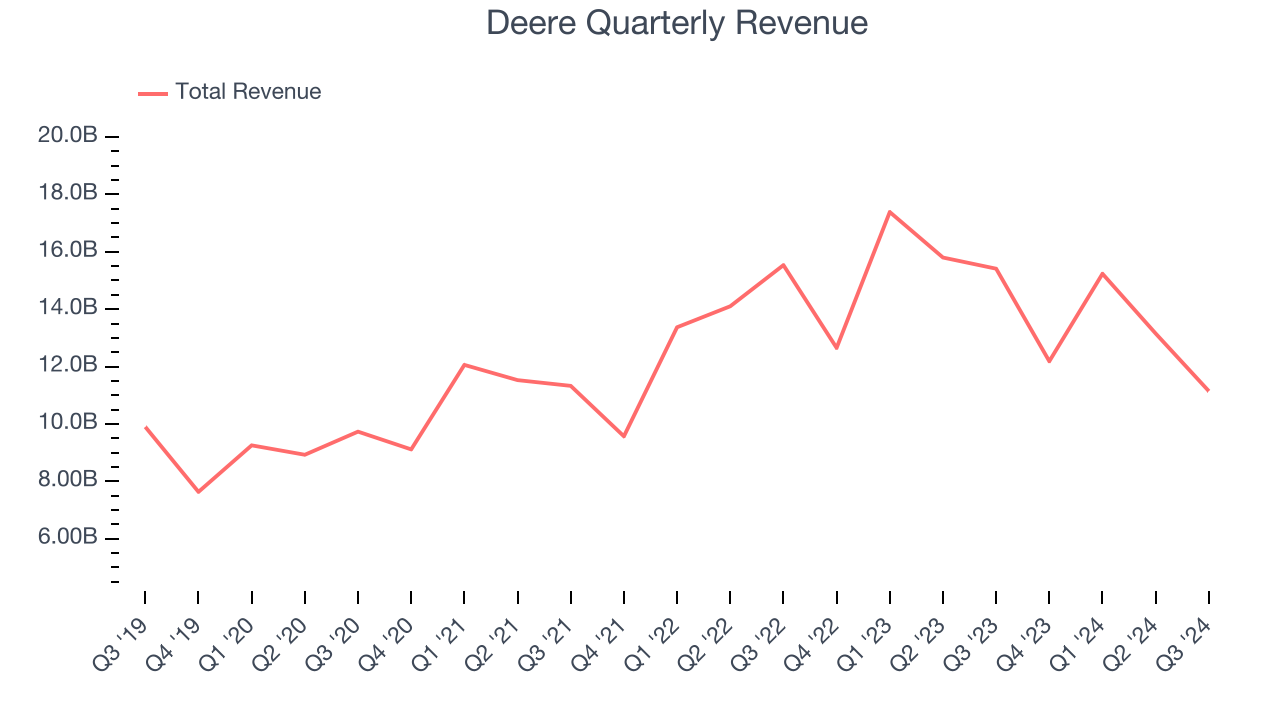
Long-term growth is the most important, but within industrials, a half-decade historical view may miss new industry trends or demand cycles. Deere’s recent history shows its demand slowed as its revenue was flat over the last two years. 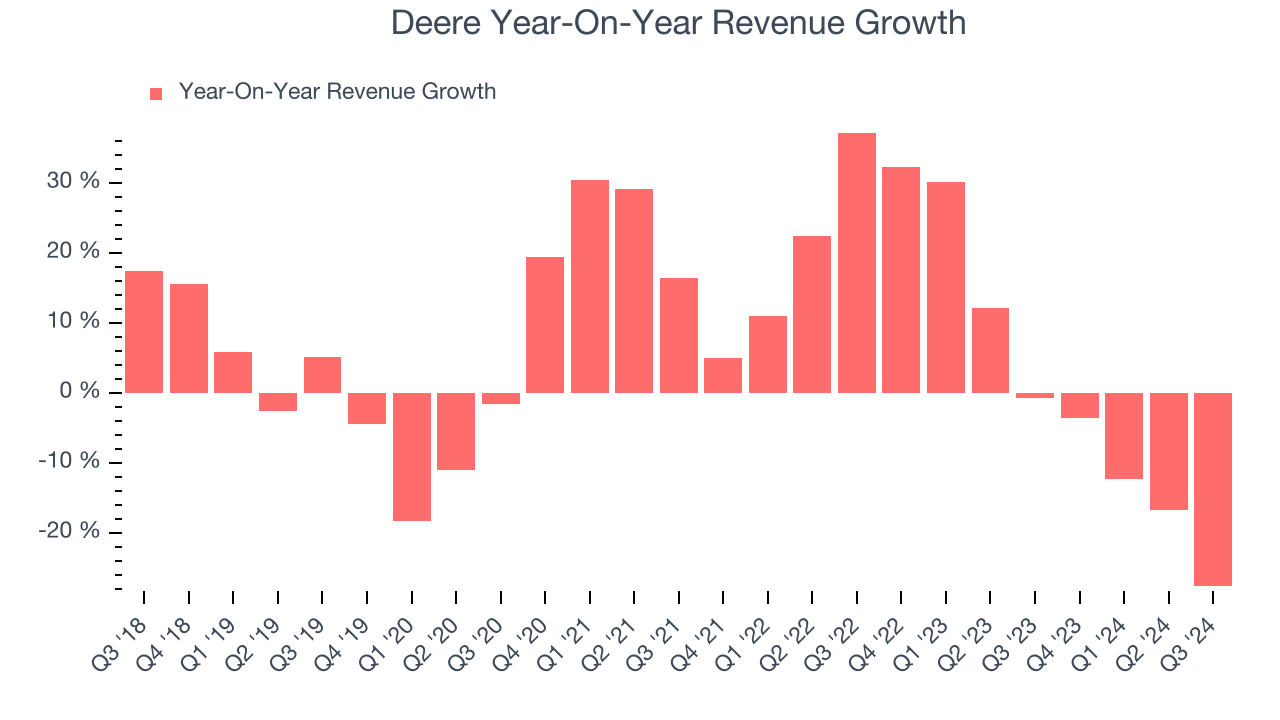
This quarter, Deere’s revenue fell by 27.7% year on year to $11.14 billion but beat Wall Street’s estimates by 20.3%.
Looking ahead, sell-side analysts expect revenue to decline 19.5% over the next 12 months, a deceleration versus the last two years. This projection is underwhelming and suggests its products and services will see some demand headwinds.
Here at StockStory, we certainly understand the potential of thematic investing. Diverse winners from Microsoft (MSFT) to Alphabet (GOOG), Coca-Cola (KO) to Monster Beverage (MNST) could all have been identified as promising growth stories with a megatrend driving the growth. So, in that spirit, we’ve identified a relatively under-the-radar profitable growth stock benefitting from the rise of AI, available to you FREE via this link.
Operating Margin
Deere has been a well-oiled machine over the last five years. It demonstrated elite profitability for an industrials business, boasting an average operating margin of 18.3%.
Looking at the trend in its profitability, Deere’s annual operating margin rose by 7.2 percentage points over the last five years, showing its efficiency has meaningfully improved.
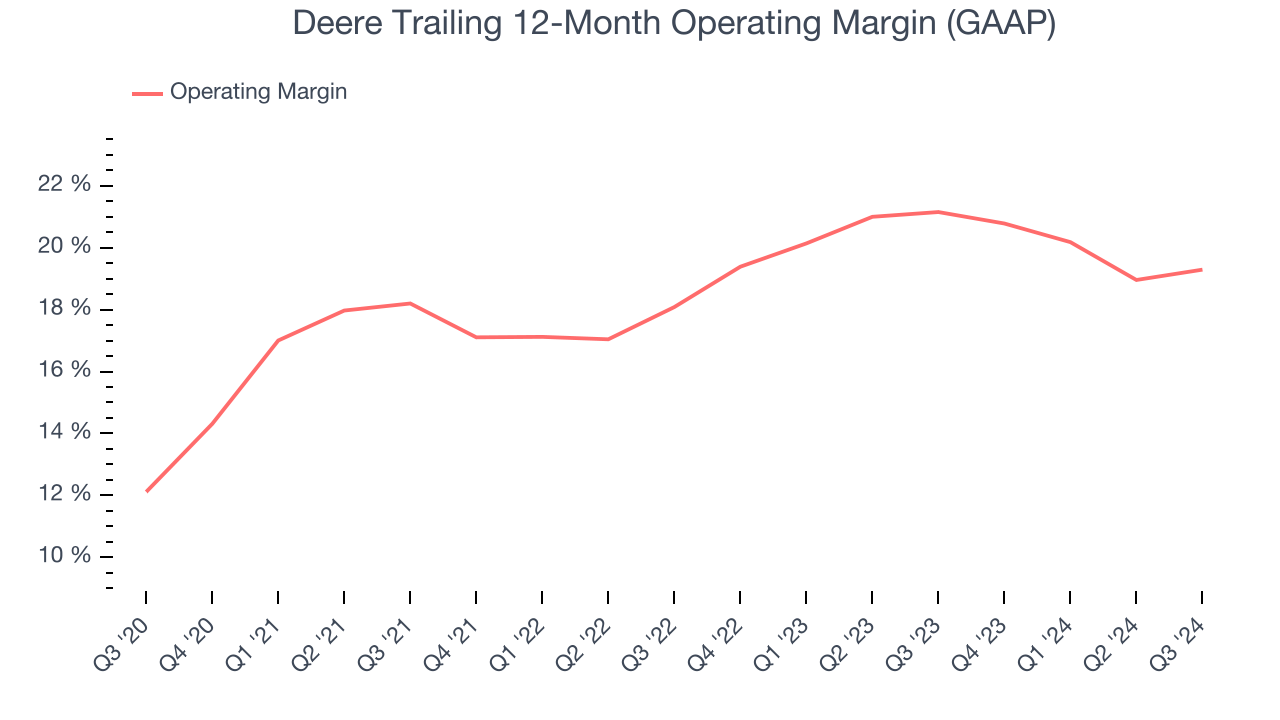
In Q3, Deere generated an operating profit margin of 21.4%, up 1.8 percentage points year on year. The increase was encouraging, and since its revenue and gross margin actually decreased, we can assume it was recently more efficient because it trimmed its operating expenses like marketing, R&D, and administrative overhead.
Earnings Per Share
We track the long-term change in earnings per share (EPS) for the same reason as long-term revenue growth. Compared to revenue, however, EPS highlights whether a company’s growth is profitable.
Deere’s EPS grew at an astounding 20.3% compounded annual growth rate over the last five years, higher than its 5.7% annualized revenue growth. This tells us the company became more profitable on a per-share basis as it expanded.
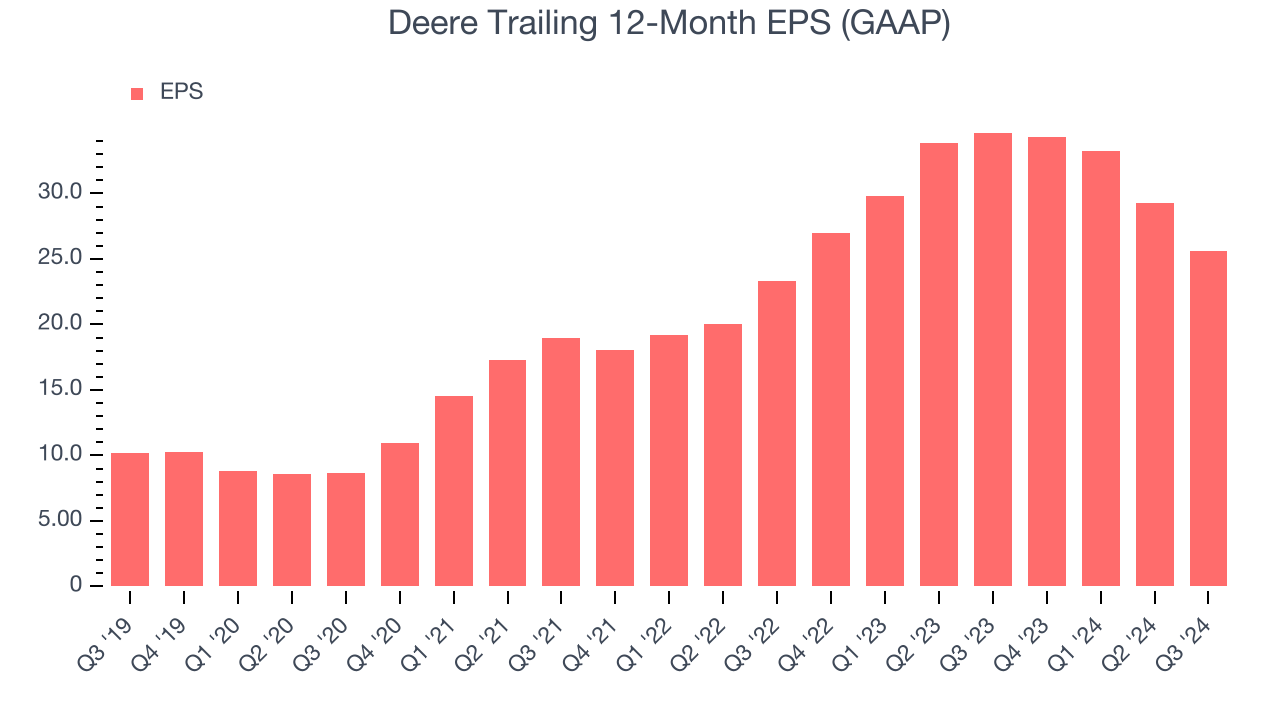
We can take a deeper look into Deere’s earnings to better understand the drivers of its performance. As we mentioned earlier, Deere’s operating margin expanded by 7.2 percentage points over the last five years. On top of that, its share count shrank by 13.9%. These are positive signs for shareholders because improving profitability and share buybacks turbocharge EPS growth relative to revenue growth. 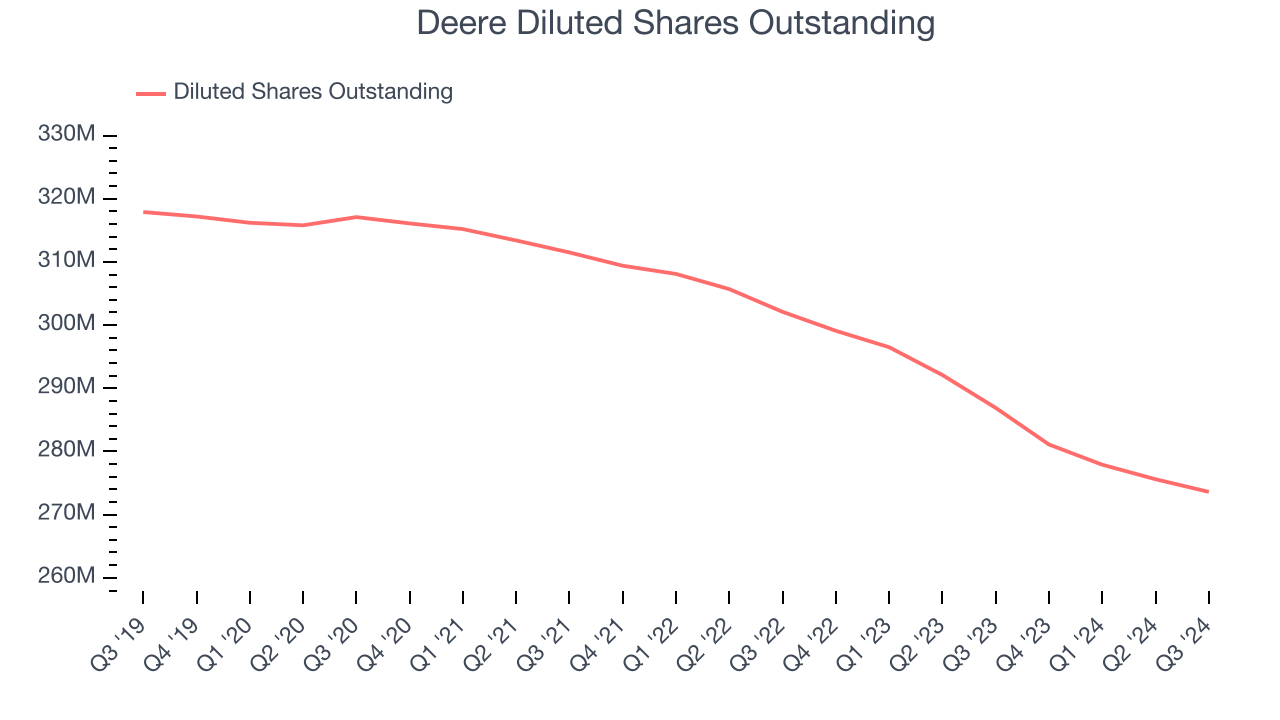
Like with revenue, we analyze EPS over a more recent period because it can provide insight into an emerging theme or development for the business.
For Deere, its two-year annual EPS growth of 4.8% was lower than its five-year trend. We hope its growth can accelerate in the future.In Q3, Deere reported EPS at $4.55, down from $8.26 in the same quarter last year. Despite falling year on year, this print easily cleared analysts’ estimates. Over the next 12 months, Wall Street expects Deere’s full-year EPS of $25.60 to shrink by 17%.
Key Takeaways from Deere’s Q3 Results
It was good that Deere beat on revenue and EPS. The company initiated fiscal 2025 guidance, calling for revenues down 10-15% year on year, showing that end markets are still weak. Zooming out, we think this quarter was mixed. The stock remained flat at $407.74 immediately following the results.
Deere may have had a good quarter, but does that mean you should invest right now? If you’re making that decision, you should consider the bigger picture of valuation, business qualities, as well as the latest earnings. We cover that in our actionable full research report which you can read here, it’s free.
